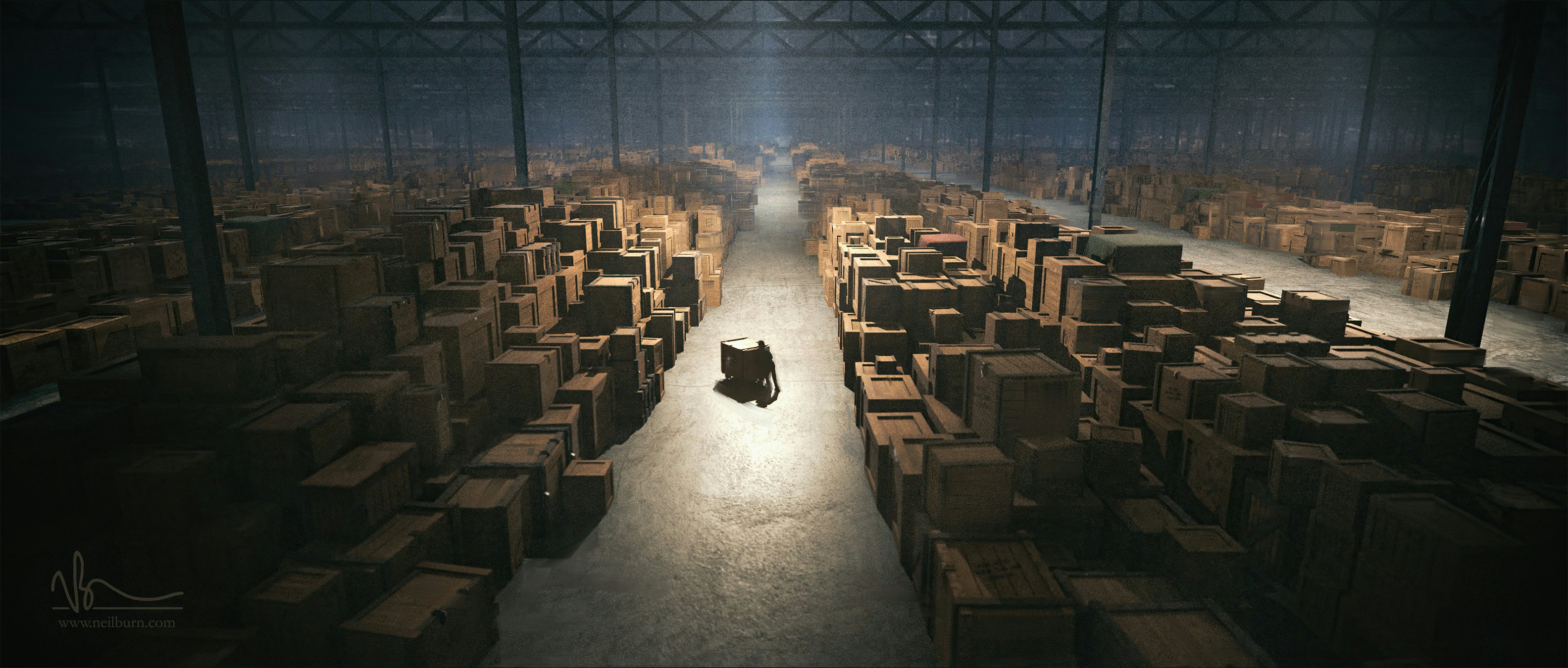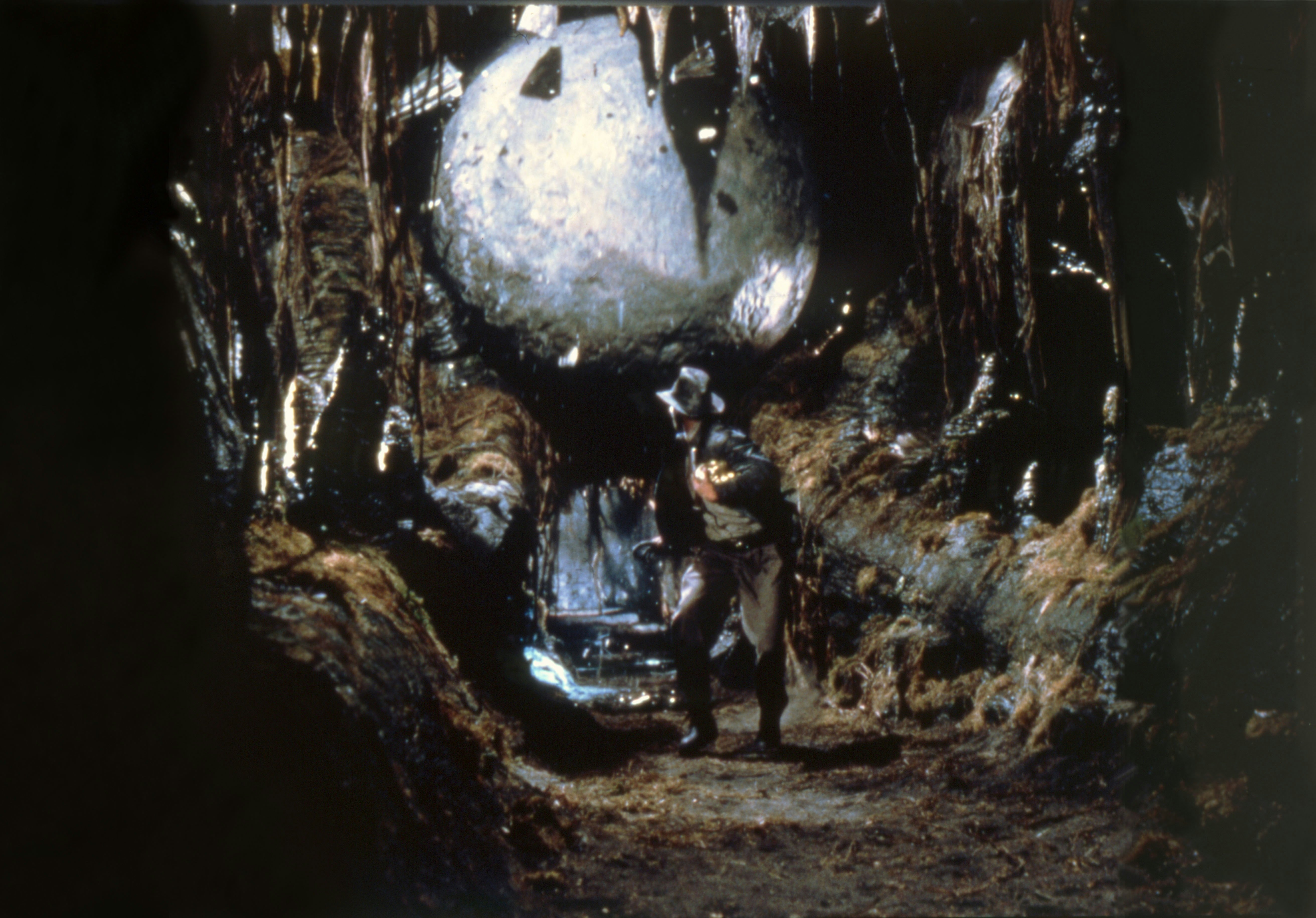
Next to Star Wars, perhaps no film series of the last 50 years has been as influential on genre cinema as Indiana Jones. If Star Wars set a path for science fiction and fantasy to follow, Indiana Jones gave a blueprint for adventure films. And while no one has to tell you where “No, I am your father” came from, you also probably don’t need to be told twice where “Why did it have to be snakes?” came from, either.
Beyond iconic lines and daring scenes etched into our imagination, there are more subtly influential parts. Maybe that’s where you found out about the Ark of the Covenant or the Holy Grail. And notably, the end of a couple of the Indiana Jones films — and some of the novels, and a couple video games — involves a mysterious area called Hangar 51. In a month where we’re celebrating the anniversaries of both Temple of Doom and The Last Crusade, Inverse takes a look back at the one of the franchise’s most mysterious inventions — and the science behind it.
First seen at the end of Raiders of the Lost Ark but not named until the release of Kingdom of the Crystal Skull, the warehouse is a government-owned repository where artifacts too dangerous to fall in the hands reside. It sets a tone when it’s first seen, both that the government may have its own Vatican library-like secret archive, but that it could be hiding some of the most important secrets of history.
Indiana Jones isn’t the only place with this idea. The X-Files has Hangar 13, an oft-referenced storage facility that inspired its page on TV Tropes.
So does such a place exist? If a government has to hide something, it has to have somewhere to hide some of the physical evidence of that, or so the story goes. Of course there are some real-life secret government warehouses. Some store medicine and essentials needed in disaster relief — not exactly the stuff of conspiracies. . Others might hold the next thing in military tech from, say, DARPA. Nuclear weapon facilities are obviously secretive and well-guarded.
Even our most basic strategic petroleum reserves have an air of mystery, located in four high-security sites deep underground in salt dome caverns along the Texas and Louisiana coasts. The government, out of the necessity of national security, lends an air of mystery to great big facilities. They’re hiding something — but not, you know, a crystal skull.
So there’s probably not a warehouse for archaeological mysteries — but that doesn’t mean people don’t truly believe it is out there. And this is exactly how conspiracies begin.
The Origin Of A Warehouse Conspiracy

“To have a conspiracy theory, you need to have some group of powerful people, and sometimes this is corporations, sometimes this is the government, and sometimes, this is just rich people,” JP Prims, a visiting lecturer in psychologist at the University of Illinois Chicago, tells Inverse. Prims studies how political affinities affect conspiratorial beliefs.
Prims says that the government is always one of the major targets in conspiracy circles, with some “very preliminary” evidence showing that “conservatives are more likely to believe theories about the government and liberals are more likely to believe theories about corporations, like pharmaceutical companies,” they say.
“There absolutely are genres and tropes in conspiracy theories and building blocks for conspiracy theories,” Prims says. “I can see how the warehouse would be one of those tropes. I feel like it pops up more in media than it does in actual real-life discussions of conspiracy theories, at least from my experience.” But many academic discussions of conspiracy theories tend to shy away from those that involve supernatural-oriented theories.
Still, cornerstones of modern conspiracy thought, like that outlined in Behold a Pale Horse by William Cooper (which was a heavy influence on both The X-Files and the QAnon movement), involve the government covering up an incident. In this case, it’s allegedly a crashed flying saucer within the confines of Area 51.
“Of course governments are keeping secrets.”
But according to Joseph Uscinski of the University of Miami, these ideas don’t really spread in linear pathways. While QAnon may seem like it went off like wildfire, most research shows people are predisposed in whether or not they are given to conspiratorial thought.
“There's this idea that the theory is the thing, that it's the unit of analysis that somehow spreads from person to person and infects people and then it makes people do things, and that's not really how it works” Uscinski tells Inverse.
It can often involve a bit of bias. Conspiracy believers are “not randomly picking up beliefs by accident, they are picking up beliefs that match how they view the world, and they view the world as a place where you have lots of powerful groups — usually people they already dislike — engaging in conspiracies and that's how the world works to them.”
In other words, some of us watch the ending of Raiders of the Lost Ark and chuckle. Wouldn’t that be wild? For others, well, it’s a confirmation of worldview. I know it!
Either way, belief in a government warehouse isn’t all that strange. “I mean, of course governments are keeping secrets and some of them are good … you know, justified … some are probably not so justified,” Uscinski says. Think: state secrets, intelligence info and the like.
Is The Internet To Blame?

There have been conspiracy theories throughout human history. While the advent of instant communication certainly can speed up the spread of conspiracies, it probably isn’t to blame.
“People who have a worldview in which conspiracies are going on all the time don’t need to be told, well, that new thing is a conspiracy,” Uscinski says. “They already see it. That's how they're interpreting the world, so they don't have to be told, they don't have to get it from somewhere else, they don't have to get up on social media.”
“Only a few weeks after the Kennedy assassination, Gallop ran a poll in which 55 percent of Americans believed it was a conspiracy rather than a lone gunman. By the mid-70s that went up to 80 percent of Americans. No internet needed. No social media needed, right? So you don't need those things for people to come to conclusions.”
“No internet needed. No social media needed.”
And even if they did somehow virally catch on, the trope of the government warehouse is likely to stay in the realm of fiction rather than becoming a more widely held belief.
“I do think that's more that because the government warehouse isn't about a specific event. Since it's not about a specific attack or anything like that or a specific election,” Prims says, “I do think that that's one of the ones the average person is much less likely to believe.”







